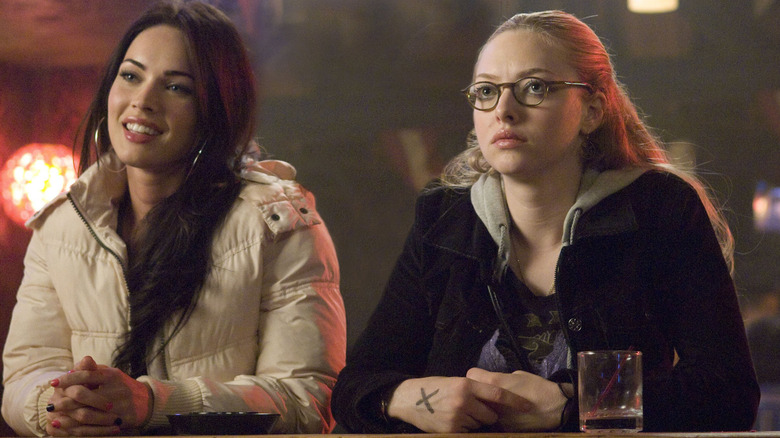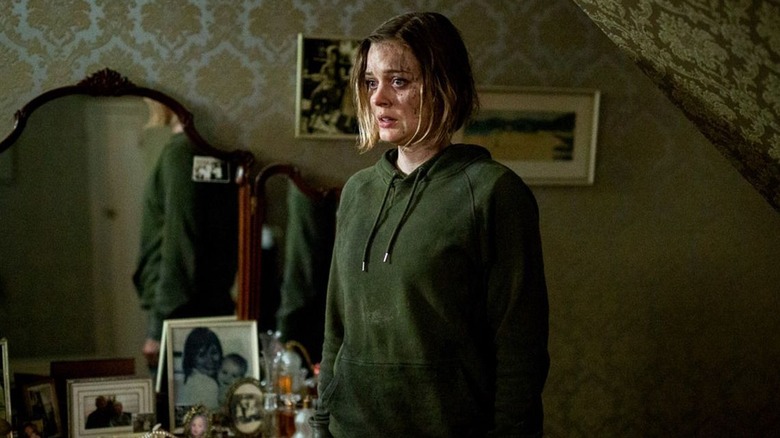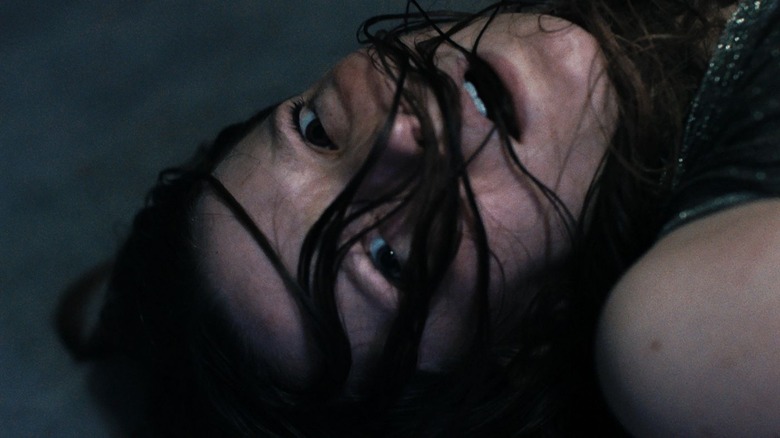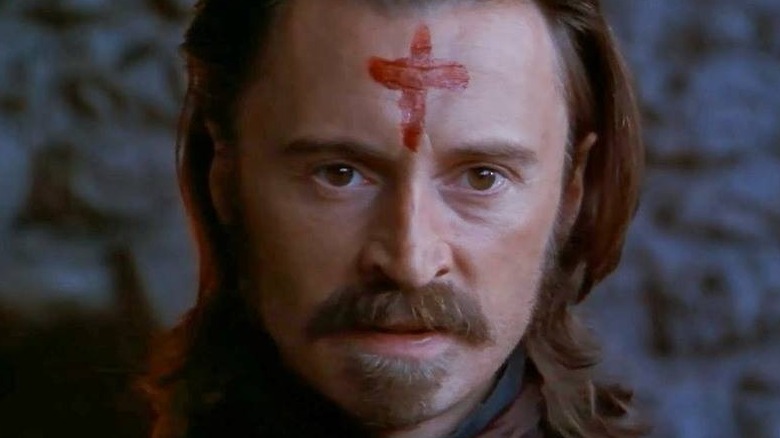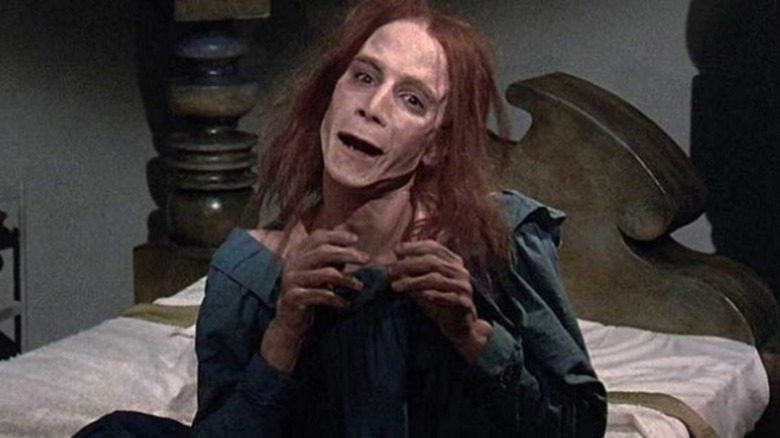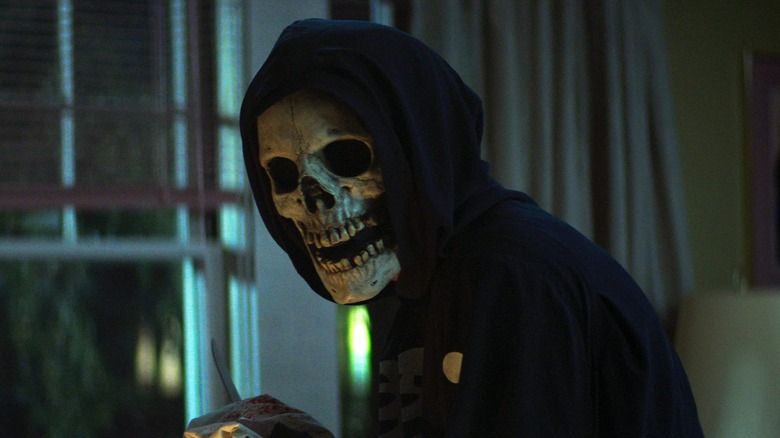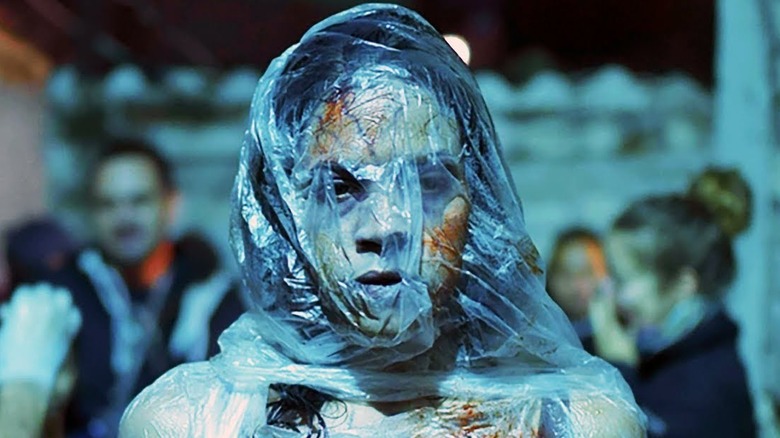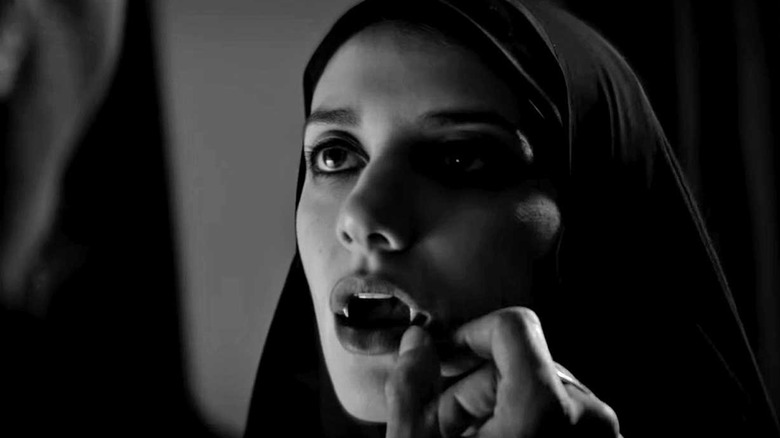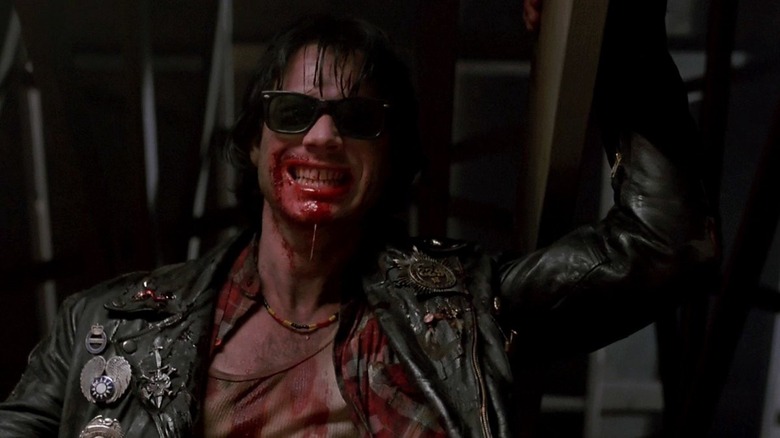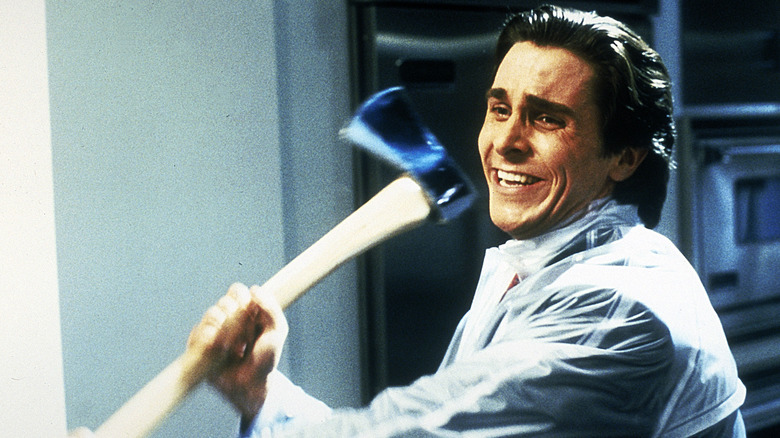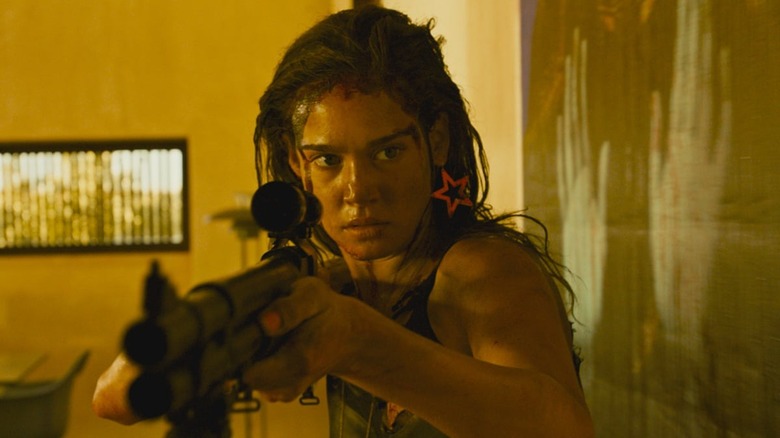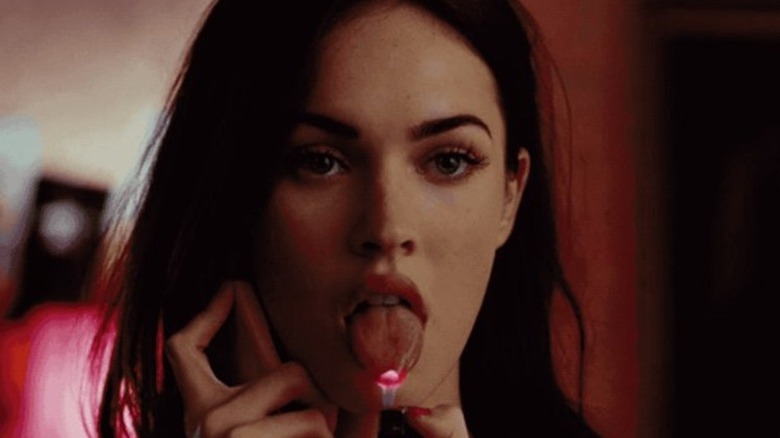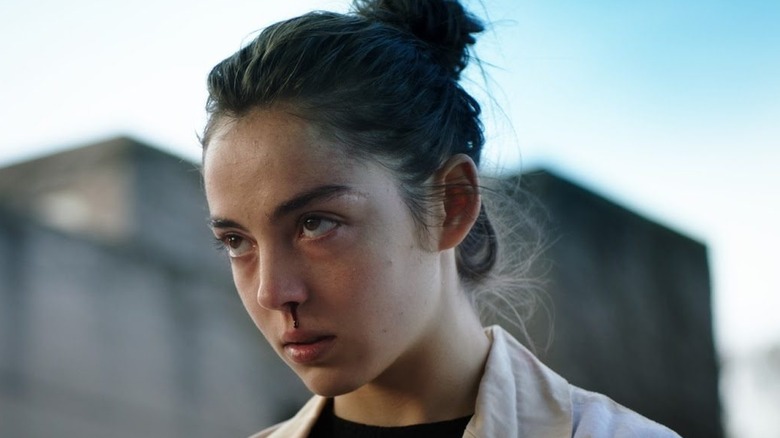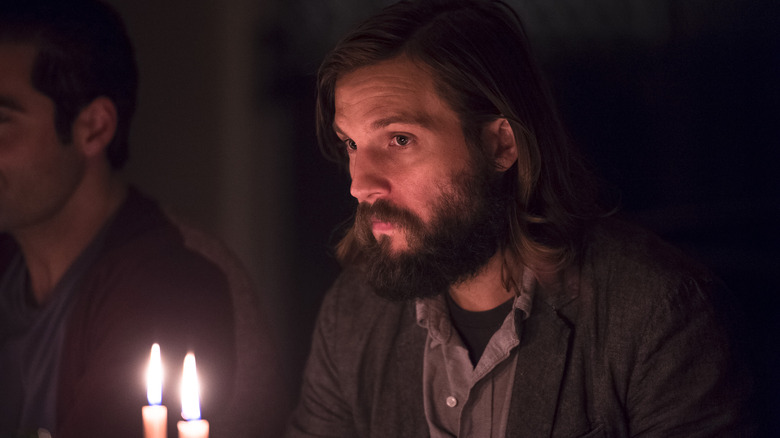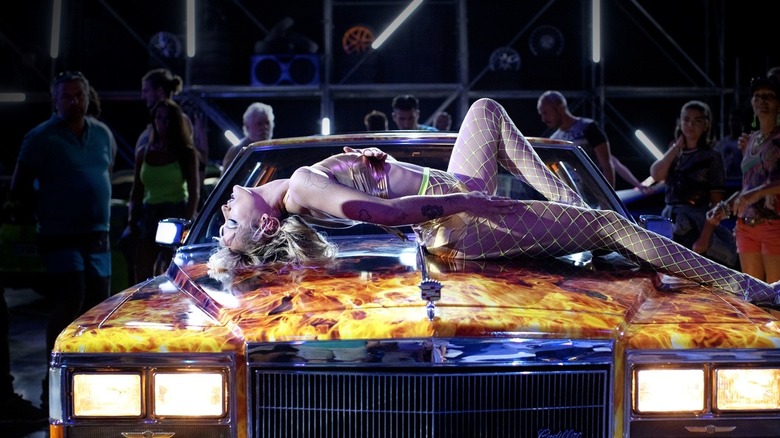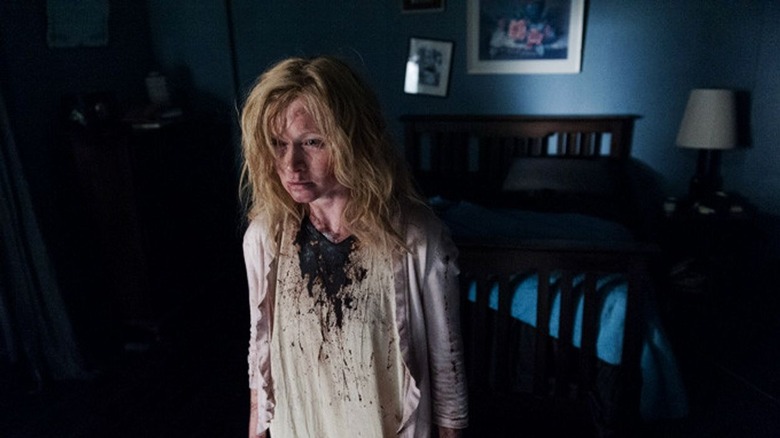The Top 15 Films By Female Horror Directors, Ranked
Diablo Cody, Oscar winner and "Jennifer's Body" writer, once told the New York Times: "When I watched movies like 'The Goonies' and 'E.T.', it was boys having adventures. When I watched 'Nightmare on Elm Street', it was Nancy beating up Freddy. It was that simple."
Cody's right. It is that simple. On its base level, horror lets audiences plug themselves into an ecstatic confrontation with fear. Sometimes it's scarring. Other times it's awesome. At its best, it's both — a synergy of nightmares and adventure with dangled-carrot payoffs of release, freedom, or revelation. Is it any wonder that Cody or any other female creator would be drawn to that?
No. The real wonder is why more women don't get horror directing jobs. The gap between the rapturous reviews for films like "Titane" or the horror-filled "Yellowjackets" pilot — both directed by women featured on this list — and Jason Blum's infamous interview about female genre directors is as cavernous as the caves of "The Descent." The reality is that some of the most visceral and entertaining horror films of the last 40 years were all helmed by women. Taken as canon, they are worthy of the Criterion.
Here are the 15 best horror movies from female directors, ranked.
15) Relic
In "Relic," nothing is more frightening than aging. The relentless march of time hangs over Natalie Erika James' feature-length debut like a pendulum, informing its characters' fears and intentions equally. It's not just that the elderly Edna (Robyn Nevin) may be demented or possessed, it's that two generations of her progeny need closure before illness or evil takes hold.
That sounds remarkably cynical, but "Relic" is anything but. The three incredible performances which anchor the film (from Nevin, Emily Mortimer, and a revelatory Bella Heathcote) are proof of this, as rich and lived-in as any work from standard Oscar-bait dramas. Both the cast and the film's frightening set pieces are directed with a sharp eye by James, who plays with the audiences' expectations by preying wholly on their natural instincts.
Without spoiling it — you'll think you know where "Relic" is headed, and you'll be wrong. Like getting older, it's a mystery whose answers are as bittersweet and lovely as they are awful. Embrace them.
14) Saint Maud
"Saint Maud" is more than its final shot, but it's also impossible to discuss canonizing "Saint Maud" without acknowledging how it ends. Rose Glass' character study of a hospice nurse whose recent conversion to Roman Catholicism leads to sinister results is excellent for most of its run time, and features transcendent work from Morfydd Clark as the titular Maud. Glass' shot compositions veer from reverent to grimy and demonic, and both underscore every step of Maud's deterioration (whatever its cause). It's a great film.
But then there's that final shot, the nail in the story's coffin, the clearest declaration of the whole picture's thematic intent by both Glass and her creative team, and it brings all 80 minutes of "Saint Maud" into sharp relief — even if it's not the kind of relief most audiences may desire. That's a power not every film, game, or work of art can wield. "Saint Maud" does so divinely.
13) Ravenous
It's remarkable that Antonia Jane Bird's "Ravenous" goes down as smoothly as it does. It's a horror-cannibal-comedy-western and, yes, those disparate genres are as difficult to blend successfully as you'd imagine. But while "Ravenous" has rough edges aplenty, it also has viscera, character, and atmosphere in spades.
Set during the Mexican-American war to an iconic original score by Michael Nyman and Blur's Damon Albarn, the story follows a group of soldiers sequestered at a remote wintery outpost. When they are tasked to investigate a number of gruesome claims about a butchered wagon train and an army commander gone rogue, things go from darkly comic to existentialist gore-fest very quickly.
That shouldn't be surprising given the movie's flesh-eating characters, but "Ravenous" really does shock the system as you're watching it. The whole movie feels like a once-in-a-lifetime assemblage of talents working towards a pointed evisceration of masculinity. The script is penned by Ted Griffith of "Ocean's Eleven" and "Matchstick Men" fame, who showcases all the grit and vivid imagination he'd go on to deploy on those projects, and the cast that brings Griffin's work to life under Bird's expert direction act like they were born to make this movie. That commitment is one of the reasons "Ravenous" has aged so well and is well worth taking a look at. It's an easy pill to swallow.
12) Pet Sematary
George Romero was originally set to direct "Pet Sematary" and, honestly, this writer thinks it's great that he didn't. To be clear, Romero rules; it's not as though he would've swung and missed in adapting Stephen King's story of a cemetery that reanimates dead pets and children. Moreover, it's that Mary Lambert (whose "American Psycho" is also ranked here) so precisely captures a parent's grief that it becomes as scary as a scalpel-wielding corpse. That feels like Lambert's singular accomplishment, and one few others could match.
Yes, "Pet Sematary" is hit or miss as a cohesive piece. But it remains a fiendish exercise in terror for audiences even decades after its initial release. It deploys its most frightening elements in an operatic cacophony; you rarely catch a break from them. In that way, the film mirrors grief's omnipresent power, particularly in the way that it can shape or break someone's life. That makes "Pet Sematary" a devastating cinematic win for Lambert, and a film that any Romero fan can get behind.
11) The Fear Street Trilogy
Leigh Janik didn't direct one of the 15 best horror films made by women — she directed three of them.
Every entry in this trilogy has iconic kills, iconic characters, and — most importantly — each film traffics in an engaging, resonant, and possibly essential narrative that favors the trilogy form above all else. One could argue "Fear Street 1666" is a weaker standalone movie than its predecessors, and that'd be fair. But to this writer's eyes, it's a pristine conclusion to the "Fear Street" saga, sacrificing its own narrative to be an indelible conclusion to the whole. Making an artistic decision like that takes guts.
But it's not surprising Janik does, given that the idea of sacrifice runs deep in "Fear Street." All three films examine what people are forced to give up by society and what they'll abandon willingly. Some abscond their normal lives for fear-based logic (like Gillian Jacobs' Ziggy Berman). Others are forced to bury love or their expressions of affection. If there's a lesson to be learned amongst the "Fear Street" trilogy's phantasmagoric blend of slasher, teen drama, and supernatural legend, it's that the truth will reveal itself, even if it takes centuries. For the "Fear Street" films themselves? It takes six hours that pass like 90 minutes.
Watch them all.
10) Tigers Are Not Afraid
Calling "Tigers Are Not Afraid" a horror film doesn't really do it justice, but that's not because horror is a dirty word or needs to be elevated. It's that Issa López's film is so committed to elevating its story and itself that it almost defies categorization — it is a genre-bender which becomes, by its end, a genre breaker.
Yes, "Tigers Are Not Afraid" has sterling horror elements and belongs on this and many other superlative lists. But López's film is also as tender as most fairy tales (which, yes, can also be brutal as most horror films), and its non-stop oscillation between the modalities of horror and urban fantasy yields a movie that plays more like a rite of passage as than a thing which audiences witness. By the end of "Tigers," you feel utterly changed. Most movies help viewers escape their lives. Issa López's debut, by contrast, might actually expand theirs.
It's something else.
8) A Girl Walks Home Alone at Night
I am not a resident of Iran. I wasn't raised in Iran and I am, if it's not obvious, not a woman nor a woman living in Iran. And I mention all of this because every time I watch Ana Lily Amirpour's black and white neo-noir vampire film "A Girl Walks Home Alone At Night," I am overwhelmed by its thesis and the power with Amirpour realizes it. If that's how I feel, imagine how it impacts an audience that isn't white and male.
This movie is rich with playful and purposeful subtext. Take the film's title alone, which imparts the image of a girl who is by herself and likely surrounded by darkness. Patriarchal conditioning suggests she's in danger. But as the first moments of "A Girl Walks Home Alone At Night" speedily prove, that's not the case. In fact, the skateboarding, chador-wearing protagonist of Amirpour's movie is herself a vampire who prowls Bad City's streets and finds distasteful men to feast on. It's a delicious subversion of expectations, one that's more powerful when observed within the political context of post-revolutionary Iran (Zahra Khosroshahi has an excellent piece on this context for Foreign Policy here).
And none of this would matter if "A Girl Walks Home Alone At Night" wasn't, on its own terms, a badass entry into the larger vampire movie canon. But it is, and it invites viewers far removed from its world and the one that birthed it into its purview. It deserves to be celebrated.
7) Near Dark
Meriweather Lewis charted the American West. He was also slain on it, mutilated by knife slashes and discovered in a cabin hotel known as Grinder's Stand bearing bullet wounds and lifeless eyes. And this is just one of many ways in which adventure and horror have gone hand in hand where the West — and, by extension, the western — is concerned. It is a journey into the unknown benefitting the brave. Even the courageous fall there.
And that's the dynamic truth Kathryn Bigelow's classic "Near Dark" seizes upon and rides once the sun sets for 90-plus minutes. A cowboy meets a gorgeous woman at a bar. She makes him a vampire. Then things get wild, reckless, and complicated.
What could have, in another era and a different (male) director's hands, been a lurid horror-comedy or dark drama is instead a ravishing, funny, and pulse-pounding frontier tale. The West becomes a kind of mirror topography for the emotional peaks and valleys of sudden lust and danger. Full-throttled performances by Adrian Pasdar, Jenny Wright, and the late Bill Paxton accent every spike of feeling the story passes through. And when the film's blood-soaked conclusion arrives, it drives a stake into the audience's memories and hearts. Bigelow would go on to make more celebrated pictures in other genres, but each hinged on the thesis "Near Dark" would articulate so effortlessly — anything worth devoting one's life to can kill you.
7) American Psycho
Calling "American Psycho" "good" or "bad" almost feels like a copout. No film is above valid criticism, of course (and certainly not Mary Harron's massive swing of a bloody satire starring an arguably career-best Christian Bale), but "American Psycho" is so effectively slick and excessive that talking about it in terms of what it accomplishes or doesn't feel sort of superfluous. This is a film that argues narcissistic materialism and homicidal tendencies are joined at the hip. The character proving this waxes poetic about Huey & The News before murdering someone with an axe. It's a lot.
To be fair, so is the Brett Easton Ellis novel which inspired Harron's film. But to continue being fair, Herron twists the source material into a sprawling yet focused look at the chicken and egg relationship that can exist between the male id and capitalist financial cultures, and the way Harron and Bale bring that conceit to life through Patrick Bateman is Criterion-worthy stuff, a tonal mishmash that coheres in moments that are both terrifying and hysterical. It's easy to hate watching "American Psycho," but it's hard to argue that its power isn't worthy of all the adulation in this very bloody world. It's good and bad by design.
6) Revenge
It is impossible for those who read about "Revenge" and haven't seen "Revenge" to imagine any part of "Revenge being enjoyable whatsoever. That's the brilliance of Coralie Fargeat's film. Yes, it is unquestionably about a woman named Jen (Matilda Lutz) whose weekend with her married boyfriend and two vagrants he knows leaves her raped left for dead. But it is also about a woman who comes into her own by doling out deeply cathartic and brutally realized punishment to some pathetic miscreants that absolutely deserve it. It's easy to call a female-forward film "post-#MeToo," but "Revenge" is the picture that earns that tag. After decades in which sexual violence has been a lurid (and filmed by males) plot point, Fargeat stakes her claim in the territory for women everywhere.
And let's be clear: "Revenge" is the work of a bonafide filmmaker. Fargeat and cinematographer Robrecht Heyvaert track Jen's evolution with maximum artistry, positioning her as an object of the male gaze in candy-coated pinks and shifting to dynamic Earth totes as the film grows more gritty and Jen becomes the predator of those who trespassed against her. If the movie wasn't so elegantly constructed, it might be unwatchable. As it is, it's an uncomfortable confrontation with the realities of rape for men everywhere and the revenge film women have deserved probably since before film was even invented.
5) Jennifer's Body
Karyn Kusama's "Jennifer's Body" is called a cult classic because it bombed upon release and then found an audience. But if the Super Yaki shirts and the film's reach beyond Film Twitter are any indication, the cult of "Jennifer's Body" is closer to Scientology-sized than NXIVM. The story of a popular high schooler named Jennifer (Megan Fox) who gets possessed by a demon when a Satan-worshipping band's ritual goes wrong has become recognized as an essential progressive text, a hysterical comedy, and an all-around brilliant movie. The irony is that the film's initial, close-minded release (and promotion — at one point 20th Century Fox wanted Megan Fox to host an amateur porn site as a tie-in) was based on the sort of stereotypical assumptions "Jennifer's Body" skewers in scene after brilliant scene.
And even if, as Slash Film noted in its initial release of the movie, "the laugh to jump ratio is 50:1," it also remarked that "there are a lot of vocal naysayers who won't give the film a real chance." Those voices have gone silent since, and what is left is the sound of a whip-smart horror-comedy whose quotable lines and memorable scenes resonate for cinema and horror fans everywhere, growing the "Jennifer's Body" cult with every passing day.
4) Raw
When Julia Ducournau's body horror feminist parable "Raw" first premiered at TIFF four years ago, audience members fainted. That's a fact, not an urban legend. And that indisputable truth meant that "Raw" — which is a tender, knowing, and very wise film — got sold to distributors as a gorehound litmus test. It absolutely is. But the narrative the film left TIFF with made the film sound less thematically rich and substantial than it is.
That's deeply unfortunate, if only because "Raw" speaks to and about society on levels most Oscar winners wish they could. The movie doesn't Trojan Horse social commentary into its narrative of a vegetarian student (Garance Marillier) who eats strange meat; it makes it the main course. "Raw" awakens to its own horrific elements in tandem with its characters, which is why it also kills as a coming-of-age film. It's why Marillier's performance runs the technicolor gambit from red-hot anger to comedic black comedy, particularly during the now infamous horse scene. More than anything, that balance of commentary and character is why "Raw" as a work of cinema can cause cinephile's pulse to quicken. It's a stunning work of art. That in and of itself is faint-worthy.
3) The Invitation
You attend a party. The party is the site of your deepest, darkest trauma. And the person who shared that with you, she's there, but so is her lover and some strangers promising pain can soon be over. Your trauma can truly hurt less.
As strange as this all sounds ... wouldn't you at least be curious?
That's the hook at the heart of "The Invitation," Karyn Kusama's slow-burn social discourse masterpiece. It's a movie that's only gotten better in pandemic times, where the site of reunited friends who find their mates irrevocably changed takes on a frightening, timely resonance. And it's a movie that's shaped pop-cultural ephemera, to boot. There's little doubt that the exquisite stake-building Kusama employs here informed her work on Showtime's smash drama "Yellowjackets," which escalates to equally violent ends. But the psychology at play in "The Invitation" is one of a kind and essential. As realized by an expert cast at the top of their game (particularly Logan Marshall-Green and John Carroll Lynch), "The Invitation" exposes the line between mental fragility and fortitude, and how the ways we cross it have immeasurable consequences.
2) Titane
"Titane" is a horror film the way wasabi ice cream is a dessert — when someone describes either to you, they sound fiery, maybe even unpalatable. A cringe of terror feels appropriate. Then you try them. Both are sweet.
Yes, the car-sex body-horror movie that won a Palme d'Or at Cannes is exceedingly gentle. It's also violent and extreme and generous. Julia Ducournau expertly executes every facet of her story, and the result is one of the young decade's most kaleidoscopic offerings in any genre. It's the story of two strangers who form a stunning connection, but the ways it folds parables about grief, image, and identity into its oil-stained layer cake are best served unspoiled. Like wasabi ice cream, a person can describe "Titane" all they want, but until you taste it? No one can prepare you for how it lingers or why. Just trust that it's worth digesting.
1) The Babadook
There is no right way to grieve. There is no moment when meaningful loss truly leaves you forever. You can try to avoid loss and grief, but the attempt will be futile. Grief finds you one way or another.
This is the shattering thesis of "The Babadook," a film so good that it practically birthed the "elevated horror" term some fans throw around too glibly. But "The Babadook" does make for an elevated strain of cinema. It features iconic characters impeccably realized by Essie Davis, Dan Henshall, and Noah Wiseman. It arrives at an ending both scary and lovely, and its cumulative power and haunting imagery should put it in contention for best debut feature of all time. Jennifer Kent has already directed a worthy follow-up to "The Babadook" in "The Nightingale," but there's no denying that her first effort feels almost perfectly stitched together.
This is ironic given the film's subject matter: "The Babadook," ultimately, tackles the messiest human emotions and makes a tidy, moving, and terrifying package from it. That doesn't just make it the greatest horror film directed by a woman — it's one of the greatest horror films directed by anyone ever.
